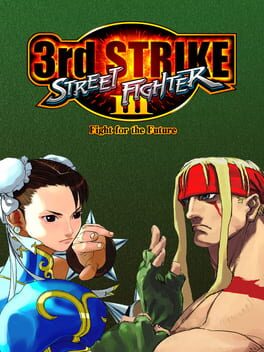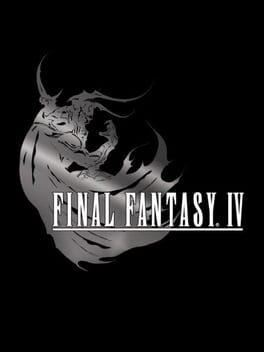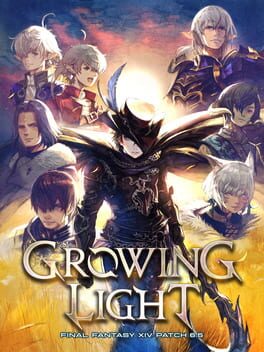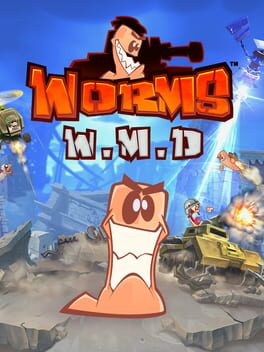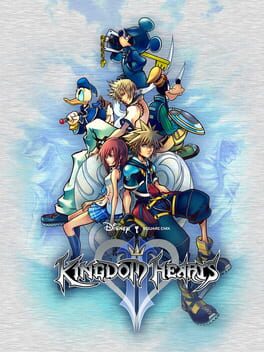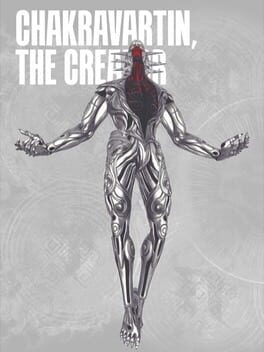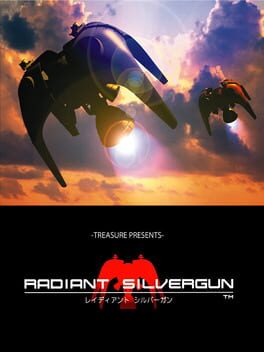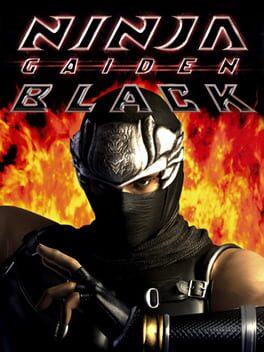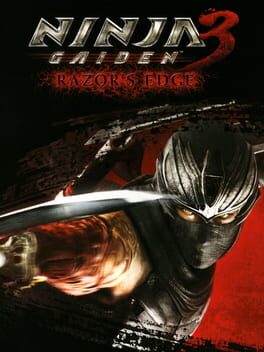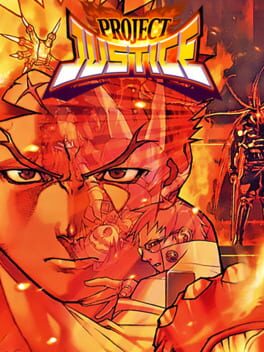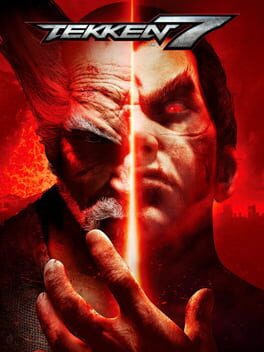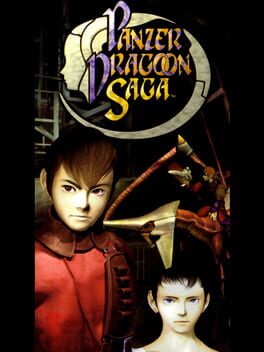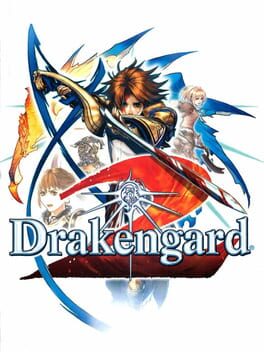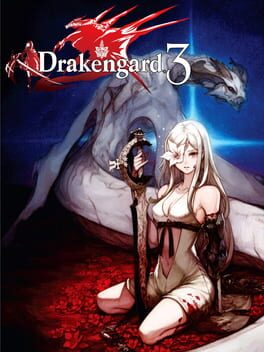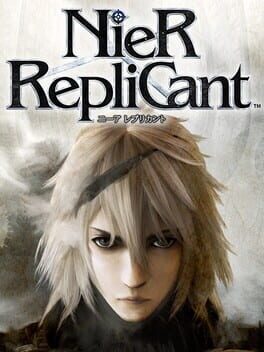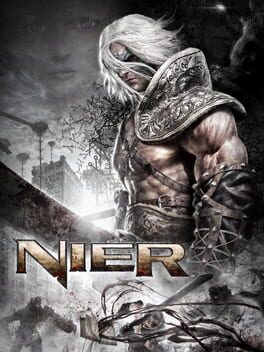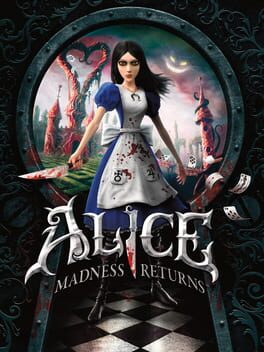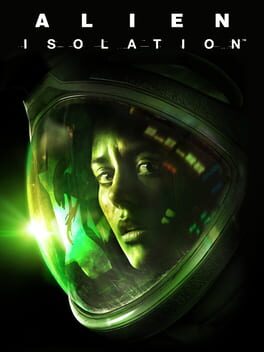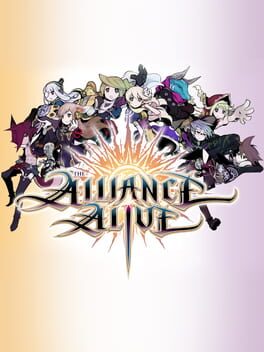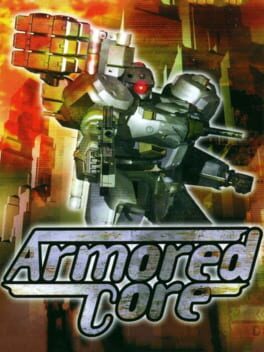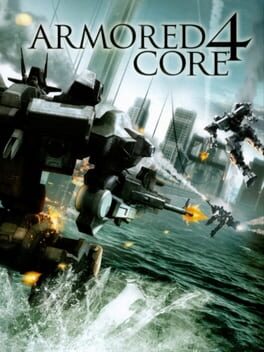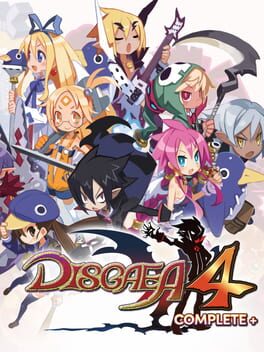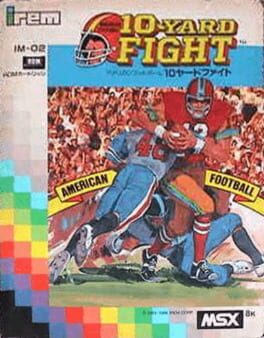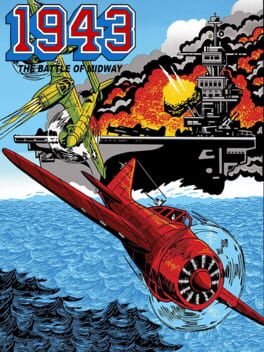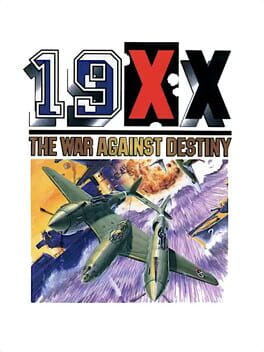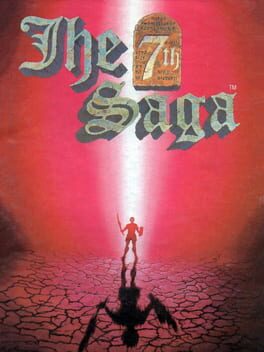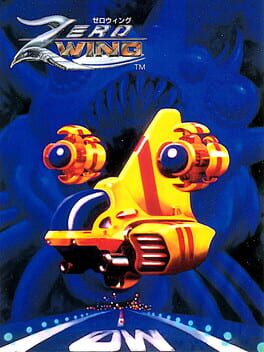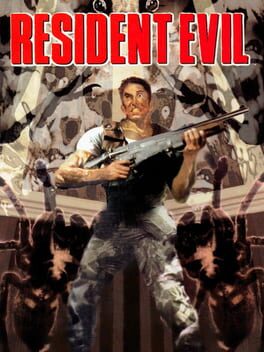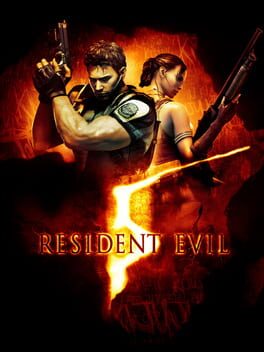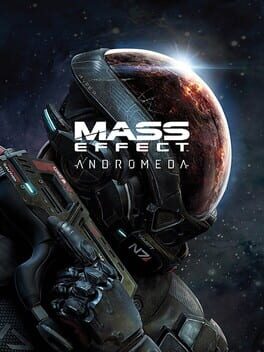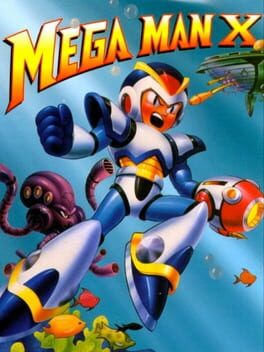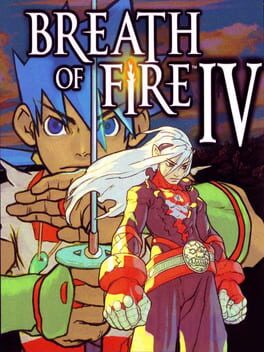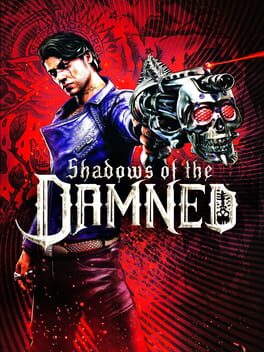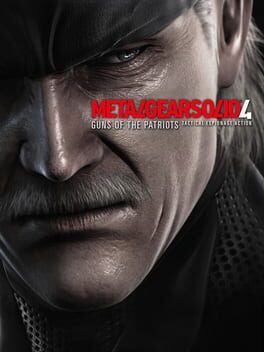216 reviews liked by Lag0n
If I had to describe 3rd strike in one word that would be "freedom". The game gives players a plethora of options in any situation. This is by design and has been discussed by Shinichiro Obata [1]: the game is built around "unanswerables" - the idea of creating situations with no clear answers/solutions/resolutions. This is done in order to avoid gameplay based around preset knowledge of situations, and instead emphasizes RPS mechanics more than other games in the genre. But how is this achieved in the game and what are its consequences?
The key to achieving such freedom is the heavy reliance on universal mechanics. The parry is an obvious example of this, along with mechanics such as the throw protection after blockstun/wakeup, crouch teching (also the extra damage done to crouching opponents). With the existence of those few mechanics, the player has plenty of tools at their disposal, that are universal across characters. There are no situations where the pool of answers is severely limited. Additionally, while some options cover a broader range of actions, the game always has a way to reward guessing the exact action that the other player will take. Because of this, every single decision carries risk and nothing is truly safe. Blocking is still the "safest" option, but it can be opened up by overheads into confirms and command grabs for reasonable damage. If that is not in a character's toolkit, then the simple throw loop in the corner can force out a reaction other than blocking. All of this contributes to creating an extremely unpredictable playstyle. Habits and predictable play can be punished severely, resulting in a game that promotes more attentive play and non-rigid playstyles.
Let's take a look at a practical situation in which those tools come into play. Dudley is a character with a strong 50/50 of an overhead or a low hit confirms that could lead to yet another 50/50 each time it is successful. If it is blocked correctly it leads back to neutral. In most other fighting games, without considering reversals (which still exist in 3S), this would be a situation where Dudley can use his absurd okizeme to play in a highly beneficial position. However, since this is 3S the opponent can always go for the parry instead. If successful it would give the defender a very strong combo in retaliation and more pressure afterwards as well. This turns the 50/50 into a double-edged sword. Yet while parrying is strong it still has its own counters - throws, delayed meaties, normals into cancels. In turn these have their own counters. The key takeaway is that, starting from 2 options (and potentially a throw sometimes), that would be the most efficient in most other fighting games, we get to create a variety of new options both sides have to consider and can use viably.
It is important to mention that those tools also limit the theoretical knowledge needed to play the game. While there is knowledge that could benefit a player, any situation provides enough information by itself for its resolution (answer). While frame data has its usage, it takes a backseat to elements like the pushback and ways in which an attack can be parried (low/high or both). Both of those elements can be deduced from the visuals alone. Even if it is a player's turn/a player has priority/advantage, the threat of a parry can steal that turn. This can be used both to escape pressure situations from frame traps or to even further your own pressure - the parry is a tool that can be used both defensively and offensively. Character specific tools still have their play, but rather than limiting or completely substituting your universal options, they tend to instead give you completely new options and create new situations.
All of it leads to some of the most unpredictable matches that one can find in the genre, while also being reasonably easy to play. It does require knowledge of those universal mechanics, but while more specific knowledge is helpful, it is often not required.
[1] If you want to read it for yourself I recommend the SF3 an oral history feature from polygon, the topic in question is discussed in the final bit of the interview.
The key to achieving such freedom is the heavy reliance on universal mechanics. The parry is an obvious example of this, along with mechanics such as the throw protection after blockstun/wakeup, crouch teching (also the extra damage done to crouching opponents). With the existence of those few mechanics, the player has plenty of tools at their disposal, that are universal across characters. There are no situations where the pool of answers is severely limited. Additionally, while some options cover a broader range of actions, the game always has a way to reward guessing the exact action that the other player will take. Because of this, every single decision carries risk and nothing is truly safe. Blocking is still the "safest" option, but it can be opened up by overheads into confirms and command grabs for reasonable damage. If that is not in a character's toolkit, then the simple throw loop in the corner can force out a reaction other than blocking. All of this contributes to creating an extremely unpredictable playstyle. Habits and predictable play can be punished severely, resulting in a game that promotes more attentive play and non-rigid playstyles.
Let's take a look at a practical situation in which those tools come into play. Dudley is a character with a strong 50/50 of an overhead or a low hit confirms that could lead to yet another 50/50 each time it is successful. If it is blocked correctly it leads back to neutral. In most other fighting games, without considering reversals (which still exist in 3S), this would be a situation where Dudley can use his absurd okizeme to play in a highly beneficial position. However, since this is 3S the opponent can always go for the parry instead. If successful it would give the defender a very strong combo in retaliation and more pressure afterwards as well. This turns the 50/50 into a double-edged sword. Yet while parrying is strong it still has its own counters - throws, delayed meaties, normals into cancels. In turn these have their own counters. The key takeaway is that, starting from 2 options (and potentially a throw sometimes), that would be the most efficient in most other fighting games, we get to create a variety of new options both sides have to consider and can use viably.
It is important to mention that those tools also limit the theoretical knowledge needed to play the game. While there is knowledge that could benefit a player, any situation provides enough information by itself for its resolution (answer). While frame data has its usage, it takes a backseat to elements like the pushback and ways in which an attack can be parried (low/high or both). Both of those elements can be deduced from the visuals alone. Even if it is a player's turn/a player has priority/advantage, the threat of a parry can steal that turn. This can be used both to escape pressure situations from frame traps or to even further your own pressure - the parry is a tool that can be used both defensively and offensively. Character specific tools still have their play, but rather than limiting or completely substituting your universal options, they tend to instead give you completely new options and create new situations.
All of it leads to some of the most unpredictable matches that one can find in the genre, while also being reasonably easy to play. It does require knowledge of those universal mechanics, but while more specific knowledge is helpful, it is often not required.
[1] If you want to read it for yourself I recommend the SF3 an oral history feature from polygon, the topic in question is discussed in the final bit of the interview.
Every man dreams at least once of being the world's strongest... It does vary a bit... but everyone dreams of it. But everyone gives up on it at some point... When they lose a fight with their brother, when they run into a bully, when they learn the pain of their father's fists...Most people wind up moving on to other dreams. But... there's still a handful of men who refuse to give up on matter what, no matter who they run into, no matter how much they age...Ridiculous as it is...
"You know, there are many different approaches you can take to game design. One approach, which we took in SF3, is to design your game around "unanswerables." I think with any game, players will search for the best tactic, the best strategy... like, if X happens, you should always do Y; if you do this here, you'll always win. There's competitive games like that, where the match is essentially a confrontation of theoretical knowledge that each player has built up. But Street Fighter 3 is a game that, by design, doesn't have a fixed answer to those questions. There is no "best" tactic; you can spend your whole life trying to find the perfect theoretical approach to a situation in SF3, but it will never be quite right. You always have to be reading your opponent in the moment; you can't just fall back on your theories. It's a game that lets you search for answers... Forever."
- Shinichiro Obata, Street Fighter III planner, Capcom Japan
- Shinichiro Obata, Street Fighter III planner, Capcom Japan
(the following is a blurb I contributed for pangburn’s massive “sight & sound” project from earlier this year, preserved in this lone journal entry to please no one beyond myself. i thought it would be nice to have something on my page for my favorite traditional fighting game, and after seeing djscheddar do something similar for silent hill i thought it would be a good excuse to crib his style and finally post something small on third strike.)
Being a series that founded its core identity on timeless, generalized depictions of caricatured combat, it’s fascinating to me that Street Fighter tried to reinvent itself with the SFIII Series, seemingly to appeal to the masses and ultimately burning bridges with a large number of their fans in the process. I think that’s a large part of why it's so special to me though: this series of games (especially Third Strike) stands nowadays as a perfect time capsule of a bygone era laced in frivolous sass and a shared optimism for a new generation. Third Strike could easily be held up on the merits of its artistic tendencies even if it wasn’t strong mechanically, but this aesthetic isn’t just cheap set dressing - this drive for creativity and spunk is interwoven with every thread of its design. While mechanics like parrying and a brand new roster of bozos may not appeal to everyone who loved the simplicity of SFII, the confidence on display in every element to the identity of SFIII makes it a peerless monolith in one of the most colorful and creative genres in the medium. As the turn of the millennium draws near and the world resets at midnight, what's the harm in being the most honest and playful versions of ourselves in the meantime?
Being a series that founded its core identity on timeless, generalized depictions of caricatured combat, it’s fascinating to me that Street Fighter tried to reinvent itself with the SFIII Series, seemingly to appeal to the masses and ultimately burning bridges with a large number of their fans in the process. I think that’s a large part of why it's so special to me though: this series of games (especially Third Strike) stands nowadays as a perfect time capsule of a bygone era laced in frivolous sass and a shared optimism for a new generation. Third Strike could easily be held up on the merits of its artistic tendencies even if it wasn’t strong mechanically, but this aesthetic isn’t just cheap set dressing - this drive for creativity and spunk is interwoven with every thread of its design. While mechanics like parrying and a brand new roster of bozos may not appeal to everyone who loved the simplicity of SFII, the confidence on display in every element to the identity of SFIII makes it a peerless monolith in one of the most colorful and creative genres in the medium. As the turn of the millennium draws near and the world resets at midnight, what's the harm in being the most honest and playful versions of ourselves in the meantime?
At the risk of sounding ridiculous, I swear that I did legitimately believe the moment I laid eyes on Street Fighter III: 3rd Strike: Fight for the Future (at the Redondo Fun Factory (RIP) in Southern California) in 2016 that if there were ever a game to convert me into a bona fide frame-counting, arcade stick-wielding, competitive freak-show, it would be the one. I knew it again, more powerfully in 2018 when it appeared before me at the Chinatown Fair Family Fun Center in New York, though neither time could I exactly articulate my belief beyond being enamored with its stunningly beautiful 2D character animation. Three years later, the prophesied freak-show has at last begun to emerge.
Street Fighter III: 3rd Strike: Fight for the Future is tactile, fast, heavy, tactical, dense, and intensely mechanically immersive. For the dedicated player, the depth of its fighting system sparks learning moments and microscopic improvements with every round fought. Win or lose, the growth is palpable, and is better earned here than in just about any game I can think of. Pick any of its masterfully rendered characters (Makoto), and feel as the pattern of their personality (and unique directional inputs) burns its way into your strategic rhythm. Learn the ins and outs of your opponents and their chosen avatars, slip headfirst into some accidental parries, then land one on purpose. It's a canvas for legends, delivered in an audiovisual package that remains nigh unmatched.
Street Fighter III: 3rd Strike: Fight for the Future is tactile, fast, heavy, tactical, dense, and intensely mechanically immersive. For the dedicated player, the depth of its fighting system sparks learning moments and microscopic improvements with every round fought. Win or lose, the growth is palpable, and is better earned here than in just about any game I can think of. Pick any of its masterfully rendered characters (Makoto), and feel as the pattern of their personality (and unique directional inputs) burns its way into your strategic rhythm. Learn the ins and outs of your opponents and their chosen avatars, slip headfirst into some accidental parries, then land one on purpose. It's a canvas for legends, delivered in an audiovisual package that remains nigh unmatched.
Final Fantasy IV
2007
Final Fantasy IV pode ser debatido como o jogo mais importante da franquia, ao menos dentro dela mesma, mesmo com diversas entradas, cada uma sendo muito única, o IV ainda é mantido vivo em todos. Inclusive o meu título favorito da série e o mais recente quando estou escrevendo isso, o Final Fantasy XVI que usa o IV na intenção de subverter diversos dos seus plots como o tema de irmandade dentro do jogo, que de forma análoga cria uma história de redenção para Golbez/Clive onde ele aceita a verdade por trás de seu passado obscuro e da sua relação com seu irmão, o final de ambos os jogos tem diversas semelhanças em plot, não quero entrar em spoilers pesados de ambos os jogos, mas para além dos paralelos nos jogos mais recentes da franquia, o IV cria a base de uma história mais dubia e cinza, refletindo sobre o maniqueísmo inicial da franquia e ainda assim mantendo essas bases dicotômicas na relação entre bem e mal. É um jogo que acima de tudo explora humanos como humanos, como seres complexos que são ambíguos, e explora isso abordando temas como colonialismo, genocídio, preconceito, luto e acima de tudo redenção, Final Fantasy IV é sobre mostrar que não somos definidos por onde nascemos, é um de nossos traços, sempre estamos abertos a mudanças e precisamos dessas mudanças sejam elas felizes ou tristes.
O 3D Remake eu considero uma excelente forma de experienciar esse clássico, além de diversas melhorias de qualidade de vida, ele ainda tem uma direção muito apropriada para as cenas do jogo e a dublagem ajuda muito nisso.
O 3D Remake eu considero uma excelente forma de experienciar esse clássico, além de diversas melhorias de qualidade de vida, ele ainda tem uma direção muito apropriada para as cenas do jogo e a dublagem ajuda muito nisso.
"Life is a series of journeys, my friend, and there's no telling what awaits us on the long road."
(Impressões da MSQ dos patchs 6.1 - 6.55)
Aprecio muitas coisas no pós-Endwalker, a tentativa de criar um novo arco para uma nova estrela foi algo bem audaz mas faz jus ao legado da Endwalker como um fechamento de arco, então nada mais justo que o pós abrir margens para explorar novos horizontes, porém isso somado ao lançamento pausado dos patchs cria a sensação de uma queda brusca de qualidade de escrita no pós-endwalker, optei então por esperar todos os capitulos dessa jornada estarem disponiveis para desfruta-los.
O formato de seriado nos patchs geralmente ajuda por já termos uma longa continuidade e interesse nesses personagens, e até a 6.3 isso não era o caso justamente por essa proposta nova, o unico personagem já trabalhado que recebe mais aprofundamento aqui é Vtra, que tem um protagonismo ao lado da personagem nova, Zero, que é uma otima adição ao cast e rapidamente se tornou uma das minhas secundarias favoritas graças ao trabalho tematico nela e sua evolução como personagem que referencia diretamente Final Fantasy IV assim como a maior parte do pós-Endwalker, a sensação de desinteresse também foi mitigada graças a adição de mais dungeons e trials, ao menos uma de cada em todos os patchs, e na 6.4 começa a ser trabalhado sequelas de Garlemald que é brilhantemente amarrado ao arco da Zero, ajudando na construção dela e na evolução de um dos arcos mais interessantes e emblematicos da Endwalker e do jogo como um todo, apartir dai as coisas ganham mais foco e proposito e culminam em um fim de jornada satisfatorio. o 5.55 serve como uma rapida ponte para o proximo arco dessa jornada, e me animou muito para a Dawntrail, ter mais interações com os personagens que eu amo e momentos de acalentar o coração marcam o fim do pós-Endwalker e o inicio da jornada para Tural.
(Impressões da MSQ dos patchs 6.1 - 6.55)
Aprecio muitas coisas no pós-Endwalker, a tentativa de criar um novo arco para uma nova estrela foi algo bem audaz mas faz jus ao legado da Endwalker como um fechamento de arco, então nada mais justo que o pós abrir margens para explorar novos horizontes, porém isso somado ao lançamento pausado dos patchs cria a sensação de uma queda brusca de qualidade de escrita no pós-endwalker, optei então por esperar todos os capitulos dessa jornada estarem disponiveis para desfruta-los.
O formato de seriado nos patchs geralmente ajuda por já termos uma longa continuidade e interesse nesses personagens, e até a 6.3 isso não era o caso justamente por essa proposta nova, o unico personagem já trabalhado que recebe mais aprofundamento aqui é Vtra, que tem um protagonismo ao lado da personagem nova, Zero, que é uma otima adição ao cast e rapidamente se tornou uma das minhas secundarias favoritas graças ao trabalho tematico nela e sua evolução como personagem que referencia diretamente Final Fantasy IV assim como a maior parte do pós-Endwalker, a sensação de desinteresse também foi mitigada graças a adição de mais dungeons e trials, ao menos uma de cada em todos os patchs, e na 6.4 começa a ser trabalhado sequelas de Garlemald que é brilhantemente amarrado ao arco da Zero, ajudando na construção dela e na evolução de um dos arcos mais interessantes e emblematicos da Endwalker e do jogo como um todo, apartir dai as coisas ganham mais foco e proposito e culminam em um fim de jornada satisfatorio. o 5.55 serve como uma rapida ponte para o proximo arco dessa jornada, e me animou muito para a Dawntrail, ter mais interações com os personagens que eu amo e momentos de acalentar o coração marcam o fim do pós-Endwalker e o inicio da jornada para Tural.
Worms W.M.D
2016
Lost Judgment
2021
76 lists liked by Lag0n
by SteinsGhash |
10 Games
by Chocc |
44 Games
by Mewtsukki |
16 Games
by owodeluxe |
609 Games
by Gliscor |
132 Games
by Aziamuth |
31 Games
by alessio |
590 Games
by FallenGrace |
29 Games
by Emiiru |
15 Games
by Mewtsukki |
34 Games

